Clancy Tucker's Blog, page 251
August 1, 2015
2 August 2015 - TIPS FOR NEW AUTHORS

TIPS FOR NEW AUTHORS
G'day folks,
Here are some tips for emerging authors, courtesy of the Huffington Post. If you are dipping your toes into the sometimes-tumultuous waters of fiction writing for the first time, you might be feeling a bit daunted right now. But there are certain rules and guidelines to follow that can help you keep your writing both focused and engaging (and, therefore, more publishable). Here are our top eight guidelines for beginning fiction writers:
Know your audience. Beginners sometimes want to appeal to the widest audience possible and so try to write for everyone. As a result, they let their work run off in too many directions and end up with a muddled mess of a story. But you can’t please everyone—a story that appeals to city-dwelling twenty-somethings won’t necessarily catch the fancy of a middle-aged man from the suburbs. Once you accept that, you can focus all of your energy on writing for the readers who will appreciate your hard work that much more.

Know your genre. This goes hand in hand with knowing your audience. There are key elements that fans of certain genres will expect to find when they start reading your work. More often than not, genres can be divided further into subgenres that accommodate very specific motivations and plotlines. Keep it consistent. It is possible to write a successful cross-genre story, but you don’t want to mix it up too much. A supernatural romantic thriller, for example, could end up alienating fans of all three genres.
Create real characters. Make your characters human—give them nervous tics, phobias, a funny way of messing up clichés. Some of the most memorable stories have three-dimensional characters that readers can feel strongly about in some way. For example: A heroine who has to overcome her deep-seated fears before she can get what she wants is much more appealing than one who just breezes through without struggle. The former’s conflict is relatable (who isn’t held back by their fears?), therefore her victory will be that much more satisfying.
The same logic applies to antagonists. Why do we love to hate Othello’s Iago? Because his actions come from emotions we all know we’re capable of feeling: jealousy, insecurity, etc.
Just like you, characters should evolve over time. Everything that happens in your story affects them in some way. The changes to their progress (or lack thereof) can be significant or minute, but they must occur. Place your character in situations that force him or her to make difficult choices, mistakes, etc. You can decide whether the character should make the “right” or “wrong” decisions, but any character not evolving on some level is static and that will take away from your story’s momentum.

Show, don’t tell. Beginners often make the mistake of explaining what is happening instead of simply showing the reader. Think of it as the difference between watching a movie and having a friend describe a movie to you.
Rather than having the narrator mention that one character spent the night in jail for egging a neighbour’s car, give the reader the play-by-play of the character laughing gleefully while throwing the eggs (underhand, of course, because they were on the bowling team). Then show them crying to the point of hiccups when the cops slap on the handcuffs. This will paint a much more vivid picture for your readers and, therefore, make the story more enjoyable.
Want to take it one step further? Include a scene showing the neighbor using the character’s mailbox for batting practice—that gives your egg-throwing hero motivation, which adds to what we talked about in Rule #3.
Stick to the main plot. Beginners often get caught up in subplots they find interesting, but don’t serve to propel the characters forward in any real way. Your story isn’t a well-cast ensemble sitcom. Focus diligently on one main plotline, and if you do decide to add subplot elements to your story, make sure they relate to the main story and help propel your character to his or her inevitable end.

Let your scenes play out. Don’t cheat your readers by trying to wrap up every scene too quickly. Events in real life don’t often end neatly; chances are neither will events in your story. Instead, let the falling action of each scene sow the seeds of the following scene’s rising action. Propel your audience through to the next plot point—make them want to keep reading.
If you are going for suspense, cliffhangers are a plus. But there is a big difference between a cliffhanger and an abrupt, unnatural close, so make your choices carefully.
Learn the art of conflict. Creating a powerful conflict and weaving it tightly throughout the story is a tricky thing to master, and can take years of practice. The catharsis that a reader will experience at the resolution, however, is worth the struggle. Conflict is what makes us interested in outcome. And your conflict must affect your characters in a way that forces them to act and grow as a result. A story with a weak conflict that leaves the characters exactly as they were at the start won’t be satisfying; your story won’t make a lasting impression.
Here’s a tip: The best way to learn how to write conflict is by reading it. The next time you’re reading a short story or novel, take note of how the author presents the main conflict and the specific ways in which the characters react to it.
Revise your story. Revising is an important part of any writer’s process, but there is much debate as to the best approach. Some writers like to finish the whole piece before starting any major rewrites. Only when the work is completed are they able to assess the story as a whole and recognize its flaws. Others prefer to rewrite as they write, finding it easier to tighten the laces as they go. A revision early in the story can clear the path for engaging plot points down the line that wouldn’t have been possible had things been written differently. Try both methods so you can feel out which one works best for you.
 Clancy's comment: All good common sense. Hope these have helped you.I'm ...
Clancy's comment: All good common sense. Hope these have helped you.I'm ...

Published on August 01, 2015 03:47
July 31, 2015
1 August 2015 - THE BROTHERS GRIMM
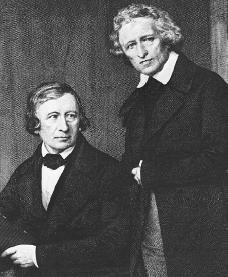
THE BROTHERS GRIMM
G'day folks,
All of us at some stage in our lives have probably read something from these two guys.
During 19th century two German brothers made a name for themselves for writing folklores. Jacob and Wilhelm Grimm became famous as Brothers Grimm for their contribution to traditional folk tales. They had diversified interest in the world of academia as they worked as cultural researchers, linguists, lexicographers, folklore collectors and writers.
The older brother, Jacob Ludwig Carl Grimm, was born in 1785 and Wilhelm Carl Grimm a year later. They grew up in Hanau, Germany and were raised by parents, Dorothea Grimm and a jurist father, Philipp Wilhelm Grimm. The untimely death of their father in 1796 plagued the family with financial difficulties. The two brothers tried to support their family before leaving Steinau.
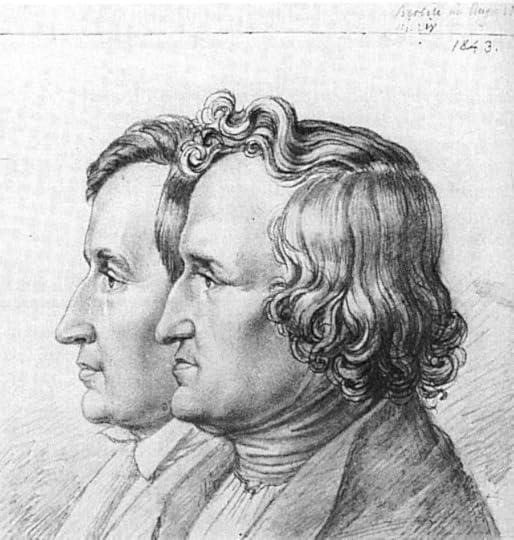
They received their education from the prestigious Friedrichsgymnasium when they moved to Kassel which was financed by their aunt. Later The Brothers Grimm pursued a law degree at the University of Marburg after completing graduation. Here they were treated as inferiors just as they were in their previous school. They were not even admitted at first for their low social standing. Status quo was severely maintained and they suffered exclusion from social and extracurricular activities. However, negligence forced them to strive for recognition and they put in extra effort in their studies. A renewed interest in history and philology, inspired by their law professor, made them pursue medieval German literature.

Jacob was appointed as secretary at a royal library in Kassel and was later joined by his brother. At a German Romantic, Clemens Brentano’s request the brothers began to rigorously research folk tales with a special focus on village oral folklores. Eventually, they compiled their research in a book named Kinder-und Hausmärchen(Children’s and Household Tales). The first volume was published in 1812 followed by the second one in 1815. These volumes now recognized as Grimms’ Fairy Tales include the famous stories of Hansel and Gretel, Cinderella,The Golden Goose, Little Red Riding Hood and Snow White. The stories in these volumes are fusion of several different accounts of the same stories. Their sources even include non-German influences, for instance, Briar Roseis inspired by a French writer, Charles Perrault’s version of The Sleeping Beauty.

The Brothers Grimm left behind legacy of folk stories, novellas and legends. Unlike the modern version of the fairytales, the first volume of Grimms’ Fairy Tales was actually grim, violent and highly unsuited for children. They were suggested to remove the violent and disturbing content from the book but they choose not comply because they believed these tales were reflective of their inherent culture. Tales like Hansel and Gretel and Little Red Riding Hood were considered didactic in nature as their culture educated obedience through fear.
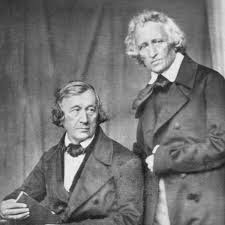
While Grimm Brothers attained employment at the University of Göttingen, they devoted their time to research in mythology. Jacob made a valuable addition to German literature with his Deutsche Mythologie (German Mythology) published in 1835. Wilhelm edited the third volume of Kinder- und Hausmärchen. Later they were removed from their posts at University of Göttingen for protesting against changes made in the constitution. They moved to Berlin in 1840 where they were appointed as lecturers at the Royal Academy of Science. The Brothers Grimm also occupied themselves as linguists. The years to come brought them the biggest project of compilation of a comprehensive dictionary in German. Before its completion Wilhelm passed away.

Clancy's comment: Mm ... Amazing collection. I wonder how many of our stories will still be read in a hundred year's time.
I'm ...


Published on July 31, 2015 03:11
July 30, 2015
31 July 2015 - MYRA HINDLEY - MURDERER

MYRA HINDLEY
- MURDERER -
G'day folks,
Here is another post about a grizzly person. Myra Hindley was an serial killer of small children, murders she committed in partnership with boyfriend Ian Brady.
Myra Hindley was an English serial killer. In partnership with Ian Brady, she committed the rapes and murders of five small children. Hindley's 17-year-old brother-in-law tipped her off to the police. Hindley plead not guilty to all of the murders. She was found guilty of three murders and was jailed for life. She was never released, and died in prison in 2002.

Born on July 23, 1942 in Manchester, England, Myra Hindley grew up with her grandmother. After the drowning death of a close male friend when she was 15, Hindley left school and converted to Roman Catholicism. In 1961, she met Ian Brady, a stock clerk who was recently released from prison. She fell in love with him, and soon gave herself over to his total control.

Testing her blind allegiance, Brady hatched plans of rape and murder. In July 1963, they claimed their first victim, Pauline Reade. Four months later, 12-year-old John Kilbride disappeared, never to be seen again. In June 1964, 12-year-old Keith Bennett followed. On the afternoon of Boxing Day, 1964, 10-year-old Lesley Ann Downey disappeared from a local fairground. Finally, in October 1965, police were alerted to the duo by Hindley's 17-year-old brother-in-law, David Smith. Smith had witnessed Brady killing 17-year-old Edward Evans with an axe, concealing his horror for fear of meeting a similar fate. Smith then went to the police with his story, including Brady having mentioned that more bodies were buried on Saddleworth Moor.

Hindley and Ian Brady were brought to trial on April 27, 1966, where they pleaded not guilty to the murders of Edward Evans, Lesley Ann Downey, and John Kilbride. Brady was found guilty of the murders of Lesley Ann Downey, John Kilbride, and Edward Evans, while Hindley was found guilty of the murders of Lesley Ann Downey and Edward Evans, and also for harboring Brady, in the knowledge that he had killed John Kilbride. They were both jailed for life.
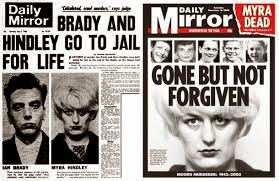 In 1970, Hindley severed all contact with Brady and, still professing her innocence, began a lifelong campaign to regain her freedom. In 1987, Hindley again became the center of media attention, with the public release of her full confession, in which she admitted her involvement in all five murders. Her subsequent applications for parole were denied. She died of respiratory failure on November 16, 2002.
In 1970, Hindley severed all contact with Brady and, still professing her innocence, began a lifelong campaign to regain her freedom. In 1987, Hindley again became the center of media attention, with the public release of her full confession, in which she admitted her involvement in all five murders. Her subsequent applications for parole were denied. She died of respiratory failure on November 16, 2002.
Clancy's comment: Man, talk about bitter and twisted. I can only try and imagine what those kids went through.
I'm ...


Published on July 30, 2015 03:49
July 29, 2015
30 July 2015 - MORE TIPS FROM WRITERS

MORE TIPS FROM WRITERS
G'day folks,
Here are some more wise quips from folks who have been around for a while. Hope they help you.

Jonathan Franzen
1 The reader is a friend, not an adversary, not a spectator.2 Fiction that isn't an author's personal adventure into the frightening or the unknown isn't worth writing for anything but money.3 Never use the word "then" as a conjunction – we have "and" for this purpose. Substituting "then" is the lazy or tone-deaf writer's non-solution to the problem of too many "ands" on the page.4 Write in the third person unless a really distinctive first-person voice offers itself irresistibly.5 When information becomes free and universally accessible, voluminous research for a novel is devalued along with it.6 The most purely autobiographical fiction requires pure invention. Nobody ever wrote a more autobiographical story than "The Metamorphosis".7 You see more sitting still than chasing after.8 It's doubtful that anyone with an internet connection at his workplace is writing good fiction.9 Interesting verbs are seldom very interesting.10 You have to love before you can be relentless.

Esther Freud
1 Cut out the metaphors and similes. In my first book I promised myself I wouldn't use any and I slipped up during a sunset in chapter 11. I still blush when I come across it.2 A story needs rhythm. Read it aloud to yourself. If it doesn't spin a bit of magic, it's missing something.3 Editing is everything. Cut until you can cut no more. What is left often springs into life.4 Find your best time of the day for writing and write. Don't let anything else interfere. Afterwards it won't matter to you that the kitchen is a mess.5 Don't wait for inspiration. Discipline is the key.6 Trust your reader. Not everything needs to be explained. If you really know something, and breathe life into it, they'll know it too.7 Never forget, even your own rules are there to be broken.

Neil Gaiman
1 Write.2 Put one word after another. Find the right word, put it down.3 Finish what you're writing. Whatever you have to do to finish it, finish it.4 Put it aside. Read it pretending you've never read it before. Show it to friends whose opinion you respect and who like the kind of thing that this is.5 Remember: when people tell you something's wrong or doesn't work for them, they are almost always right. When they tell you exactly what they think is wrong and how to fix it, they are almost always wrong.6 Fix it. Remember that, sooner or later, before it ever reaches perfection, you will have to let it go and move on and start to write the next thing. Perfection is like chasing the horizon. Keep moving.7 Laugh at your own jokes.8 The main rule of writing is that if you do it with enough assurance and confidence, you're allowed to do whatever you like. (That may be a rule for life as well as for writing. But it's definitely true for writing.) So write your story as it needs to be written. Write it honestly, and tell it as best you can. I'm not sure that there are any other rules. Not ones that matter.
 Clancy's comment: There ya go. Worth reading, eh?I'm ...
Clancy's comment: There ya go. Worth reading, eh?I'm ...


Published on July 29, 2015 03:47
July 28, 2015
29 July 2015 - SHOTS OF ASIA

SHOTS OF ASIA
G'day folks,As you know, I've spent a lot of time travelling throughout Asia. Trust me. If you ever get the chance to visit anywhere in Asia, do it. It is a great part of the world to take photographs. You just never know what may be around the next corner. So, having said that, welcome to some brilliant photographs from Asia.




















Clancy's comment: Amazing shots by some creative photographers. What a sensational part of the world.
I'm ...


Published on July 28, 2015 03:51
July 27, 2015
28 July 2015 - GENENE JONES - MURDERER
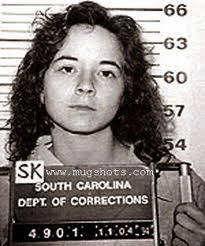
GENENE JONES
- MURDERER -
G'day folks,
Here is something different, and rather gruesome. Genene Jones murdered somewhere between 11 to 46 children while working at a Texas medical center. She was sentenced to 99 years in prison in 1985.
Genene Jones was born in Texas on July 13, 1950. She went into nursing in 1977. While working at Bexar County Medical Center Hospital, Jones gave deadly injections to somewhere between 11 to 46 children. The exact number is unknown because hospital officials destroyed records. She was convicted in 1985 and sentenced to 99 years in prison. She will be up for parole in 2017.

Genene Jones was born on July 13, 1950, in San Antonio, Texas, and given up for adoption. Jones worked as a beautician before going into nursing in 1977. She worked at several hospitals in the San Antonio, Texas, area before transferring to a medical clinic in the early 1980s.
It is believed that while working at Bexar County Medical Center Hospital, Genene Jones killed between 11 and 46 infants and children who were in her care by injecting them with heparin and succinylcholine. The exact number of murders remains unknown because after the first conviction, hospital officials destroyed records of her activities to prevent further litigation and public outrage.
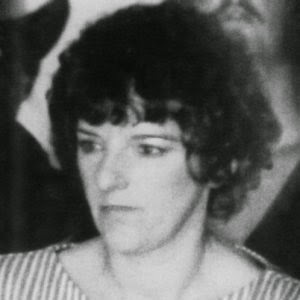
In 1985, Jones was convicted of two crimes: the murder of Chelsea McClellan and the attempted murder of Rolando Santos. She was sentenced to 99 years in prison, but is scheduled to receive parole in 2017 due to a law in place at the time of her sentencing to reduce prison overcrowding.


Clancy's comment: Wow, you just never know, eh? A nurse? Some humans are frightening.
I'm ...


Published on July 27, 2015 05:18
July 26, 2015
27 July 2015 - LEXOPHILES

LEXOPHILES
G'day folks,
Welcome to a collection of lexophiles. What are they you may ask? (Noun) a lover of words, one who derives pleasure from various use of words, who appreciates the nuances surrounding different words, and who is alert to synonyms, antonyms, homophones, and homonyms, often using them for effect, sometimes in humour. 1. A bicycle can’t stand alone; it is two tired.
2. A will is a dead giveaway.
3. Time flies like an arrow; fruit flies like a banana.
4. A backward poet writes inverse.
5. In a democracy it’s your vote that counts; in feudalism, it’s your Count that votes.
6. A chicken crossing the road: poultry in motion.
7. If you don’t pay your exorcist you can get repossessed.
8. With her marriage she got a new name and a dress.
9. Show me a piano falling down a mine shaft and I’ll show you A-flat miner.
10. When a clock is hungry it goes back four seconds.
11. The guy who fell onto an upholstery machine was fully recovered.
12. A grenade fell onto a kitchen floor in France resulted in Linoleum Blownapart.
13. You are stuck with your debt if you can’t budge it.
14. Local Area Network in Australia : The LAN down under.
15. He broke into song because he couldn’t find the key.
16. A calendar’s days are numbered.
17. A lot of money is tainted: ‘Taint yours, and ‘taint mine.
18. A boiled egg is hard to beat.
19. He had a photographic memory which was never developed.
20. A plateau is a high form of flattery.
21. The short fortune-teller who escaped from prison: a small medium at large.
22. Those who get too big for their britches will be exposed in the end.
23. When you’ve seen one shopping centre you’ve seen a mall.
24. If you jump off a Paris bridge, you are in Seine.
25. When she saw her first strands of gray hair, she thought she’d dye.
26. Bakers trade bread recipes on a knead to know basis.
27. Santa’s helpers are subordinate clauses.
28. Acupuncture: a jab well done.
29. Marathon runners with bad shoes suffer the agony of de feet.
30. The roundest knight at king Arthur’s round table was Sir Cumference. He acquired his size from too much pi.
31. I thought I saw an eye doctor on an Alaskan island, but it turned out to be an optical Aleutian.
32. She was only a whisky maker, but he loved her still.
33. A rubber band pistol was confiscated from algebra class because it was a weapon of math disruption.
34. The butcher backed into the meat grinder and got a little behind in his work.
35. No matter how much you push the envelope, it’ll still be stationery.
36. A dog gave birth to puppies near the road and was cited for littering.
37. Two silk worms had a race. They ended up in a tie.
38. A hole has been found in the nudist camp wall. The police are looking into it.
39. Atheism is a non-prophet organization.
40. Two hats were hanging on a hat rack in the hallway. One hat said to the other, ‘You stay here, I’ll go on a head.’
41. I wondered why the baseball kept getting bigger. Then it hit me.
42. A sign on the lawn at a drug rehab center said: ‘Keep off the Grass.’
43. A small boy swallowed some coins and was taken to a hospital. When his grandmother telephoned to ask how he was, a nurse said, ‘No change yet.’
44. The soldier who survived mustard gas and pepper spray is now a seasoned veteran.
45. When cannibals ate a missionary, they got a taste of religion.
46. Don’t join dangerous cults: Practice safe sects.

Clancy's comment: Pretty clever, eh? Loved number 43!
I'm ...

Think about this!

Published on July 26, 2015 04:57
July 25, 2015
26 July 2015 - VERNON JORDAN Jr.
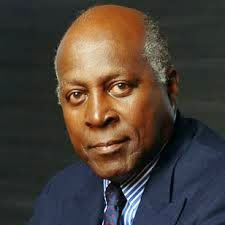
VERNON JORDAN Jr.
G'day folks,
Welcome to some background on an attorney, civil rights leader, business consultant and influential power broker.
“I'm here because I stand on many, many shoulders, and that's true of every black person I know who has achieved.” —Vernon Jordan Jr.
Vernon Jordan Jr. was born in Atlanta, Georgia, in 1935. He became field secretary for the NAACP in Georgia in 1961, and later ascended to prominent posts with the United Negro College Fund and the National Urban League. Jordan left the Urban League after surviving an assassination attempt in 1980, and served as an influential adviser to President Bill Clinton in the 1990s.
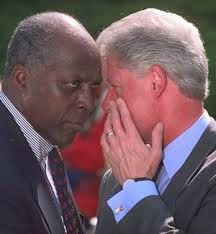
Early Life
Vernon Eulion Jordan Jr. was born on August 15, 1935, in segregated Atlanta, Georgia. His father, Vernon Sr., was a postal worker and his mother, Mary Belle, ran a successful catering business. Addressed by his mother as "man," to counter the prejudicial term of "boy" often levied on black males, Jordan grew up in the nation's first government-funded housing project for African Americans.
Jordan excelled in high school and upon graduation in 1953, he enrolled at DePauw University, in Indiana, majoring in political science. Though many friends attended historically black colleges, Jordan said he chose the virtually all-white school to "change the way blacks lived in the United States."
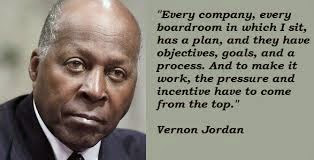
Working to Advance Civil Rights
In 1957, Vernon Jordan Jr. enrolled at Howard University School of Law, where he met his first wife, Shirley Yarbrough. After receiving his J.D. in 1960, he returned to Atlanta to clerk for famed civil rights attorney Donald Hollowell, quickly finding himself on the front lines of actions to end Jim Crow laws.
Taking over as Georgia's NAACP field secretary in 1961, Jordan was tasked with expanding membership, opening new branches, and organizing boycotts and demonstrations. With his oratorical skills and level-headed thinking, he quickly moved into positions of greater authority and responsibility. In 1964, Jordan became director of the Southern Regional Council's Voter Education Project, helping to significantly increase the number of black voters in the Deep South.
In 1971, Jordan became president of the National Urban League. He developed close ties with key members of the Nixon Administration, including aide John Ehrlichman. This drew strong criticism from militant blacks, who accused Jordan of "selling out." Jordan countered that very little could be accomplished if people limited their interactions to others with similar backgrounds and interests. He added real racial equality would elude blacks if they remained on the margins.

Attempted Assassination
On May 29, 1980, Vernon Jordan Jr. was shot and seriously wounded by an alleged white supremacist named John Paul Franklin. After a long recovery, Jordan was able to resume a full work schedule. Although Franklin was acquitted, he later admitted to the shooting while imprisoned for another murder.
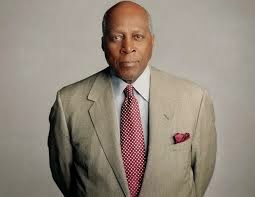
Private Law and Presidential Adviser
In 1981, Vernon Jordan Jr. left the Urban League and joined a powerful law firm in Washington, D.C. His wife, Shirley, died in 1985, and he remarried in 1986.
Having become close to Arkansas Governor Bill Clinton, Jordan aided Clinton's successful 1992 presidential campaign before becoming an unofficial adviser to the administration. In 1998, he was accused of helping to cover-up Clinton's affair with White House intern Monica Lewinsky. Jordan maintained his composure through hours of questioning by prosecutors and was later cleared of all allegations.
A member of several corporate boards, including American Express, J.C. Penny and the Dow Jones Company, Jordan has also served as senior managing director of investment firm Lazard Frères & Co. LLC since 2000. His autobiography, Vernon Can Read!: A Memoir, was published in 2001.

Clancy's comment: And, there is still plenty of work to do for other lawyers and civil rights activists.
I'm ...


Published on July 25, 2015 04:03
July 24, 2015
25 July 2015 - WISE TIPS WORTH NOTING

WISE TIPS WORTH NOTING
G'day folks,
Time for some reminders.
















Clancy's comment: There ya go. Worth reading, eh?
I'm ...


Published on July 24, 2015 06:12
July 23, 2015
24 July 2015 - TEDDY BEARS

TEDDY BEARS
G'day folks,
No doubt, many of you have had a teddy bear at some stage in your life. Well, do you know how the concept began? In November 1902, President Theodore Roosevelt and some of his friends went on a hunting trip to Mississippi. After hours of searching, Roosevelt and his group had not come across any wild animals. Finally, the group did track down and surrounded a helpless bear. One of the guides asked the president to shoot the bear so he could win a hunting trophy. The president refused, and news reporters throughout the country spread the story of Roosevelt's kind act.
Not long after this took place, a famous cartoonist named Clifford Berryman drew a cartoon based on Roosevelt 's rescue of the bear. When a store owner in Brooklyn saw the cartoon, he decided to make toy bears to sell in his shop. He asked president Roosevelt for permission to use the name “"Teddy's Bear"” for his toys, as a reminder of the bear Roosevelt had set free. Nowadays, everyone knows these toys as Teddy Bears, but few people know that they were named after President Theodore “"Teddy"” Roosevelt.
November 14 has been designated American Teddy Bear Day.






 Clancy's comment: Well, there ya go. Pretty cute, eh?I'm ...
Clancy's comment: Well, there ya go. Pretty cute, eh?I'm ...


Published on July 23, 2015 04:10



